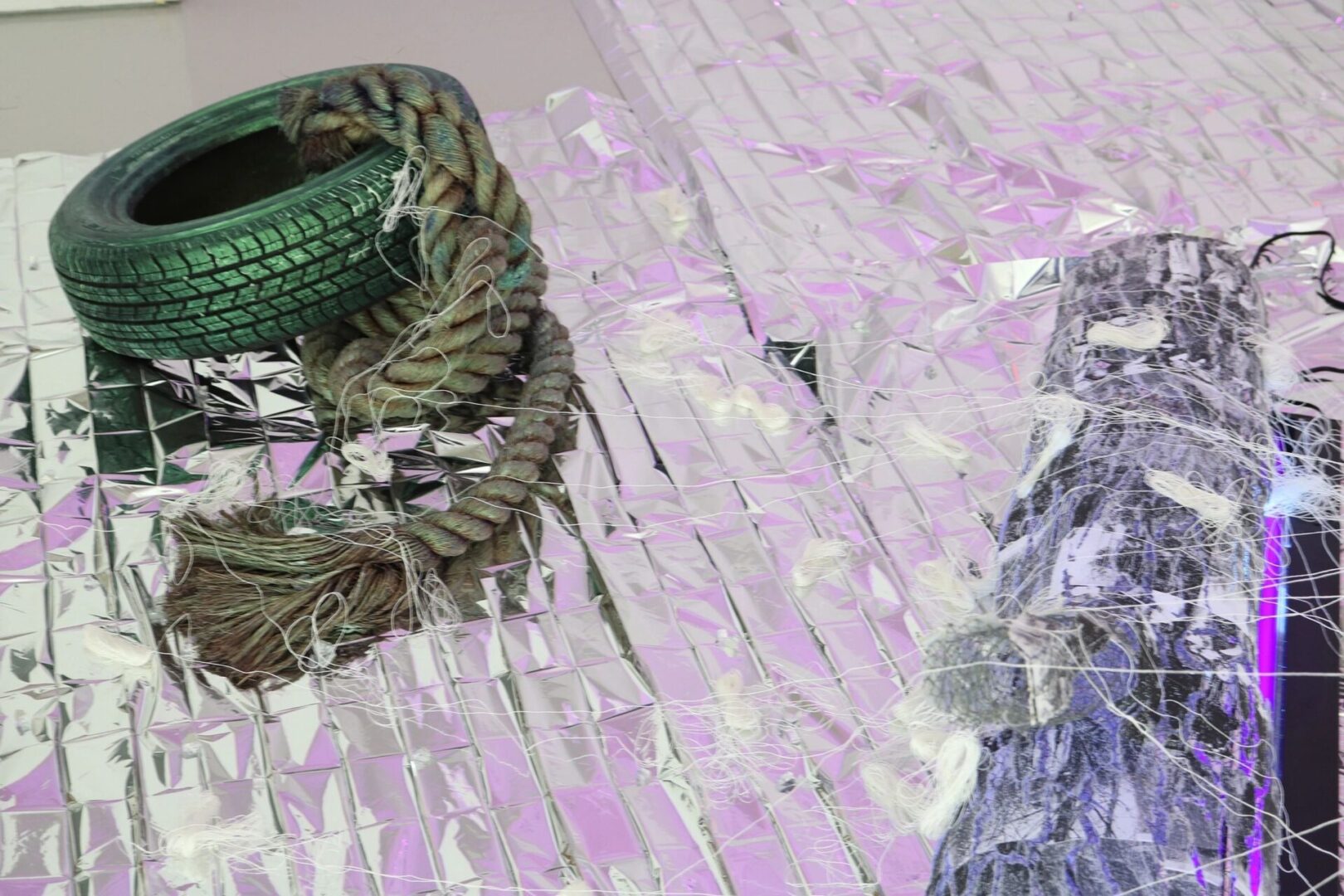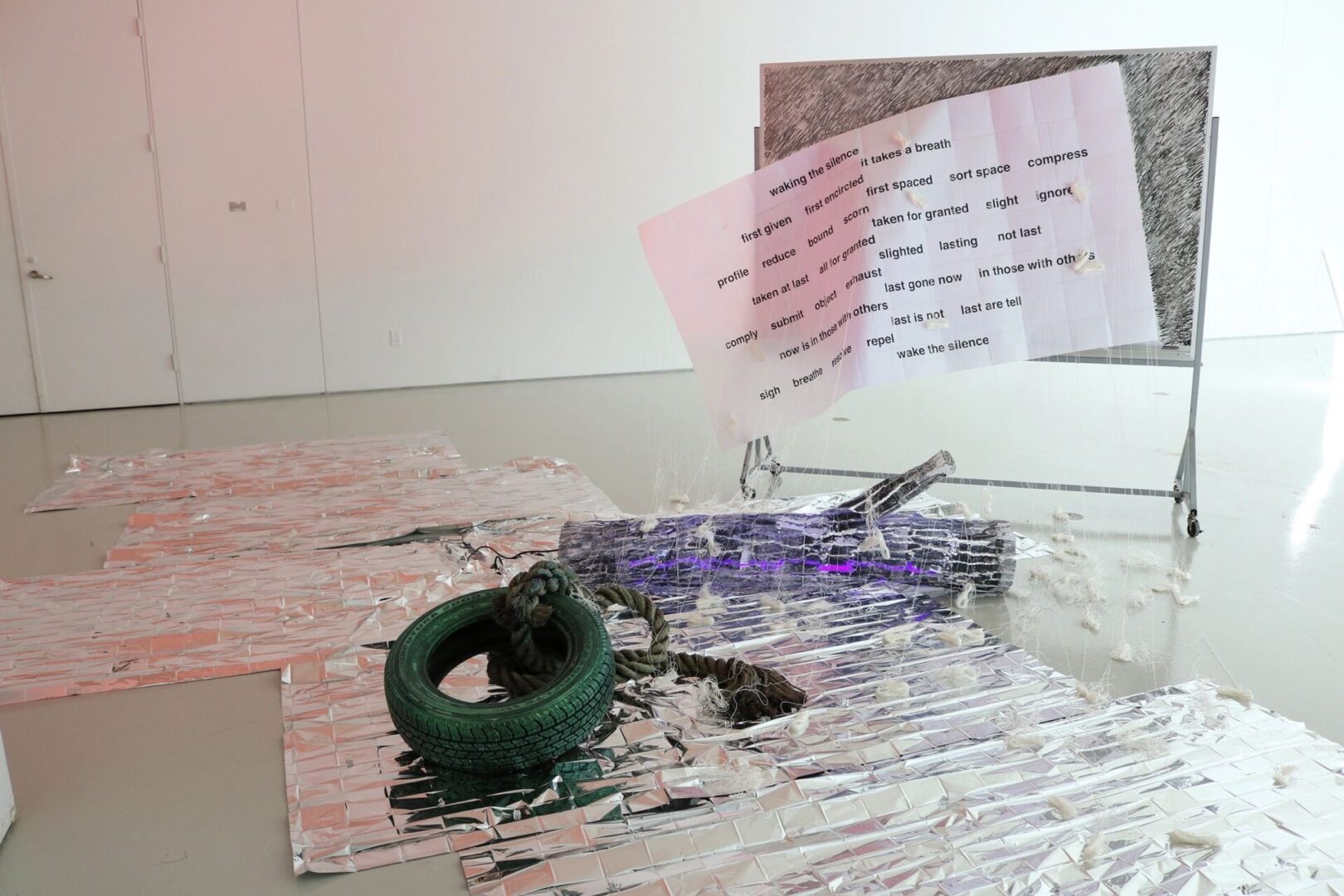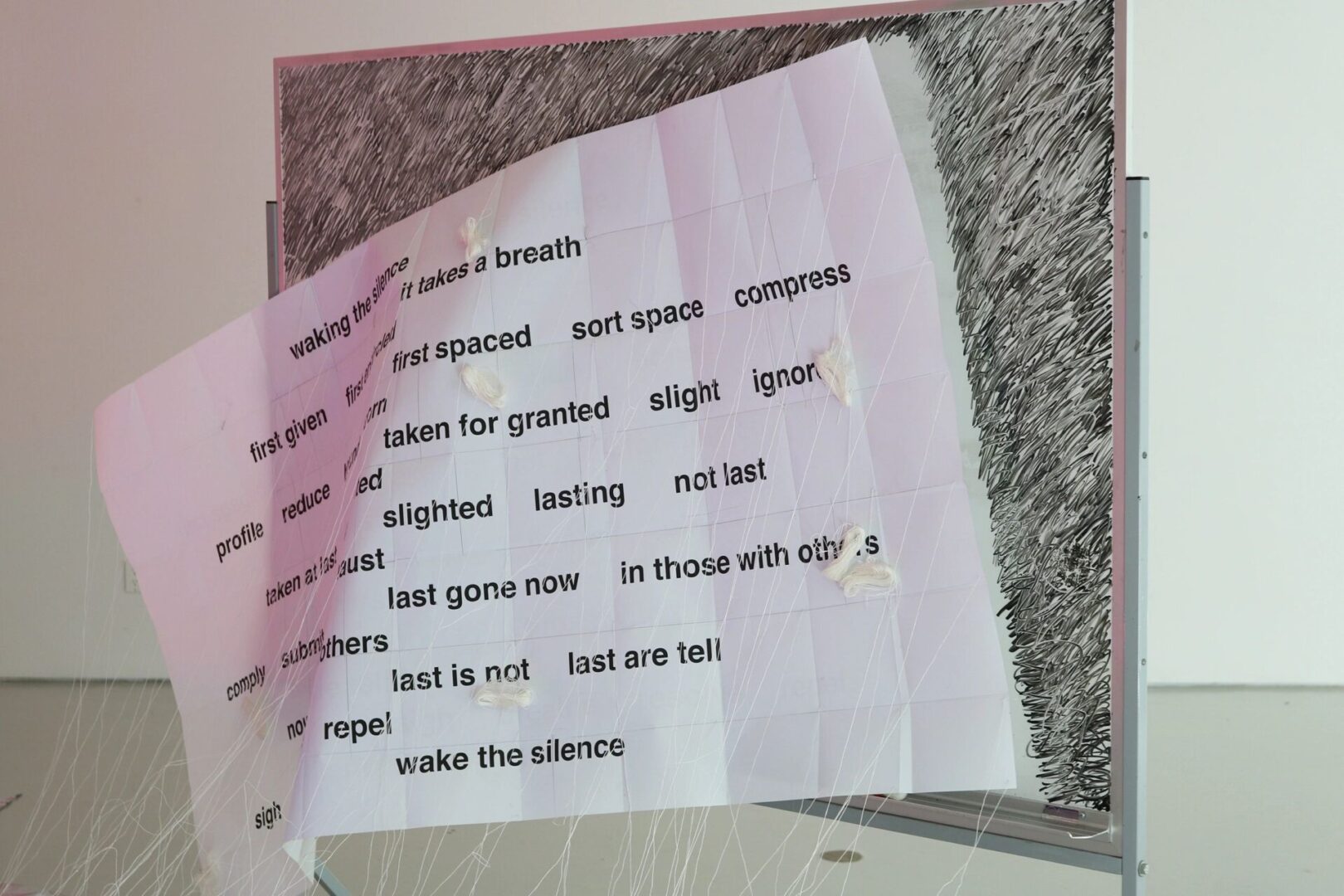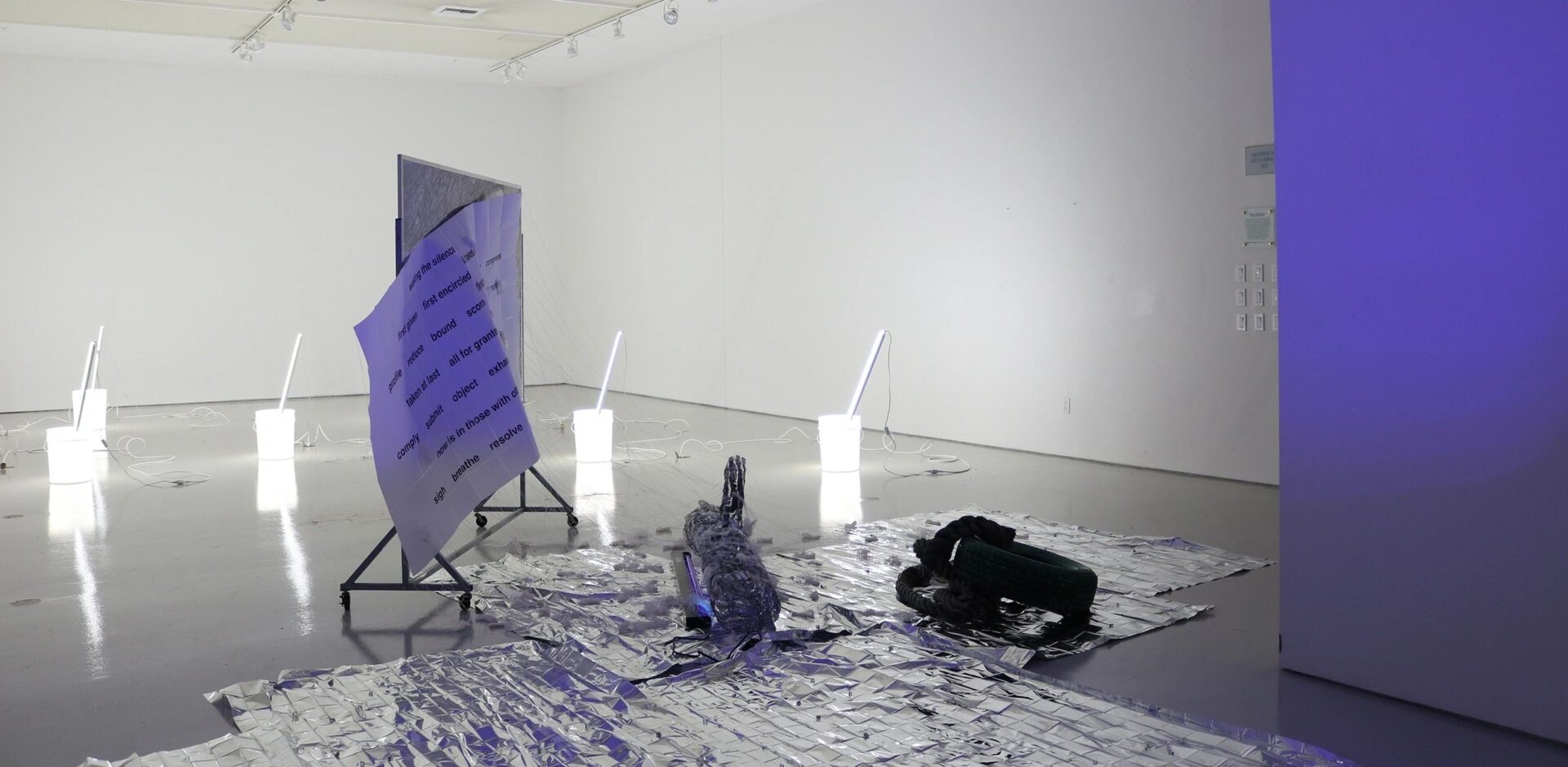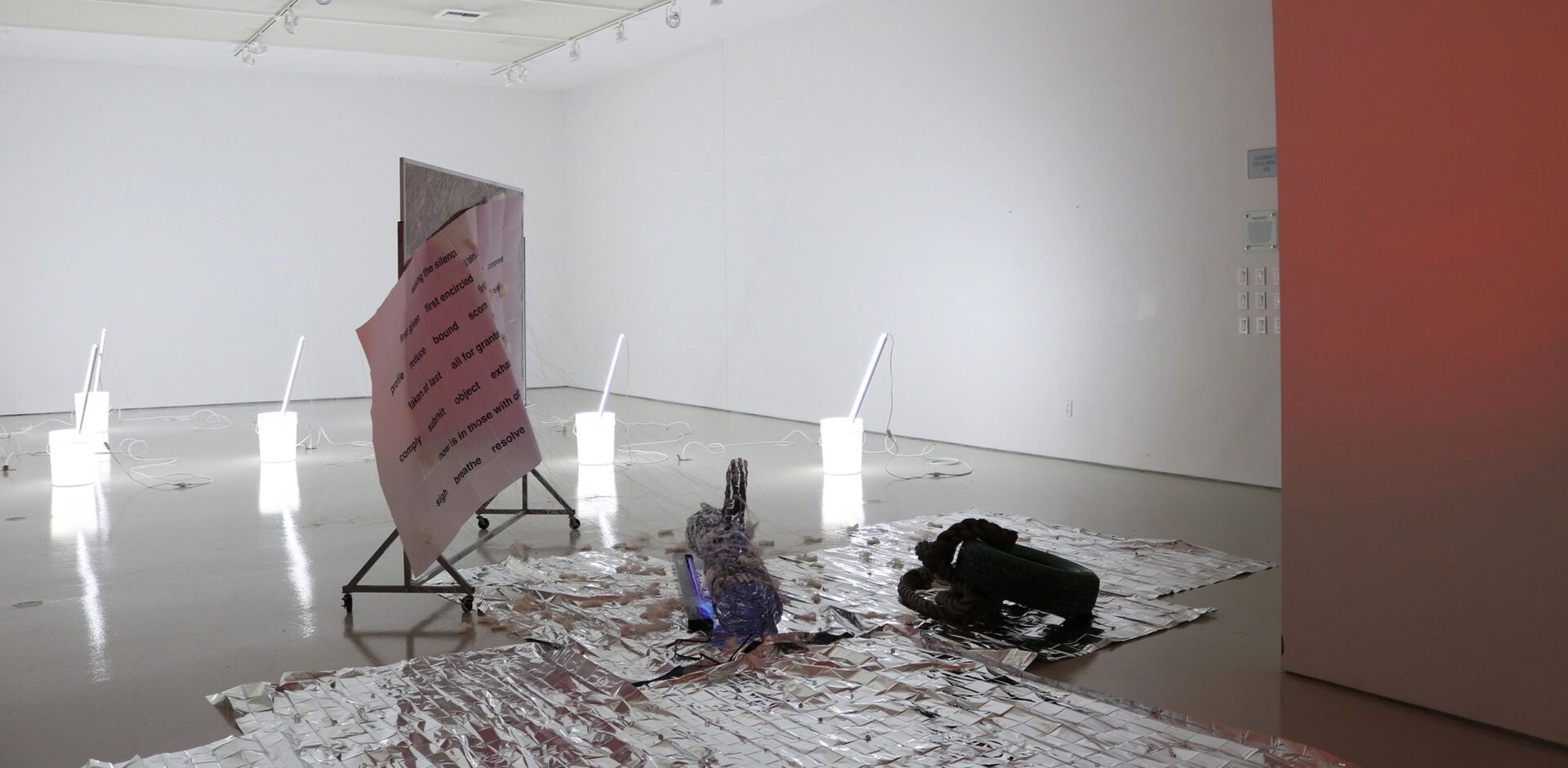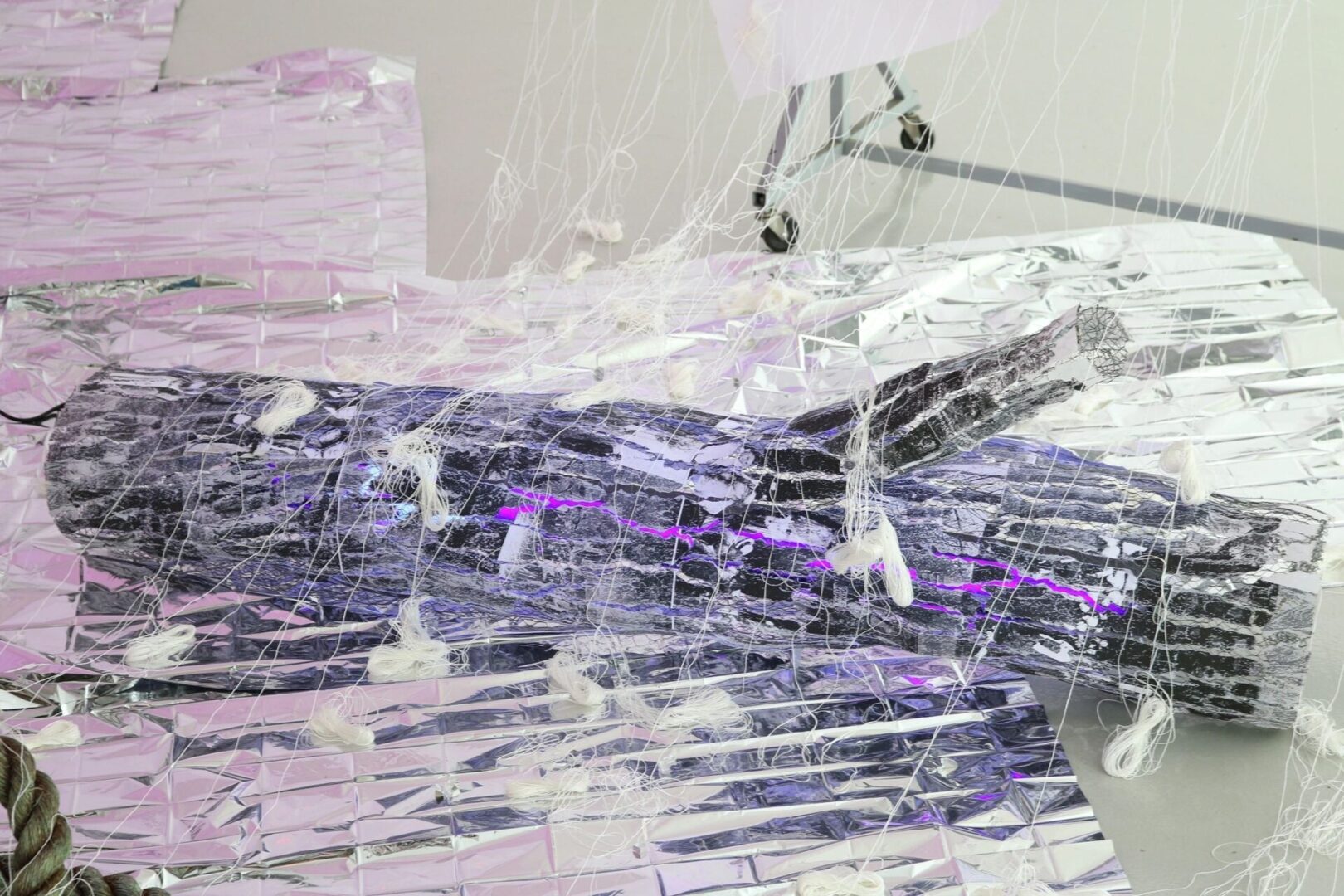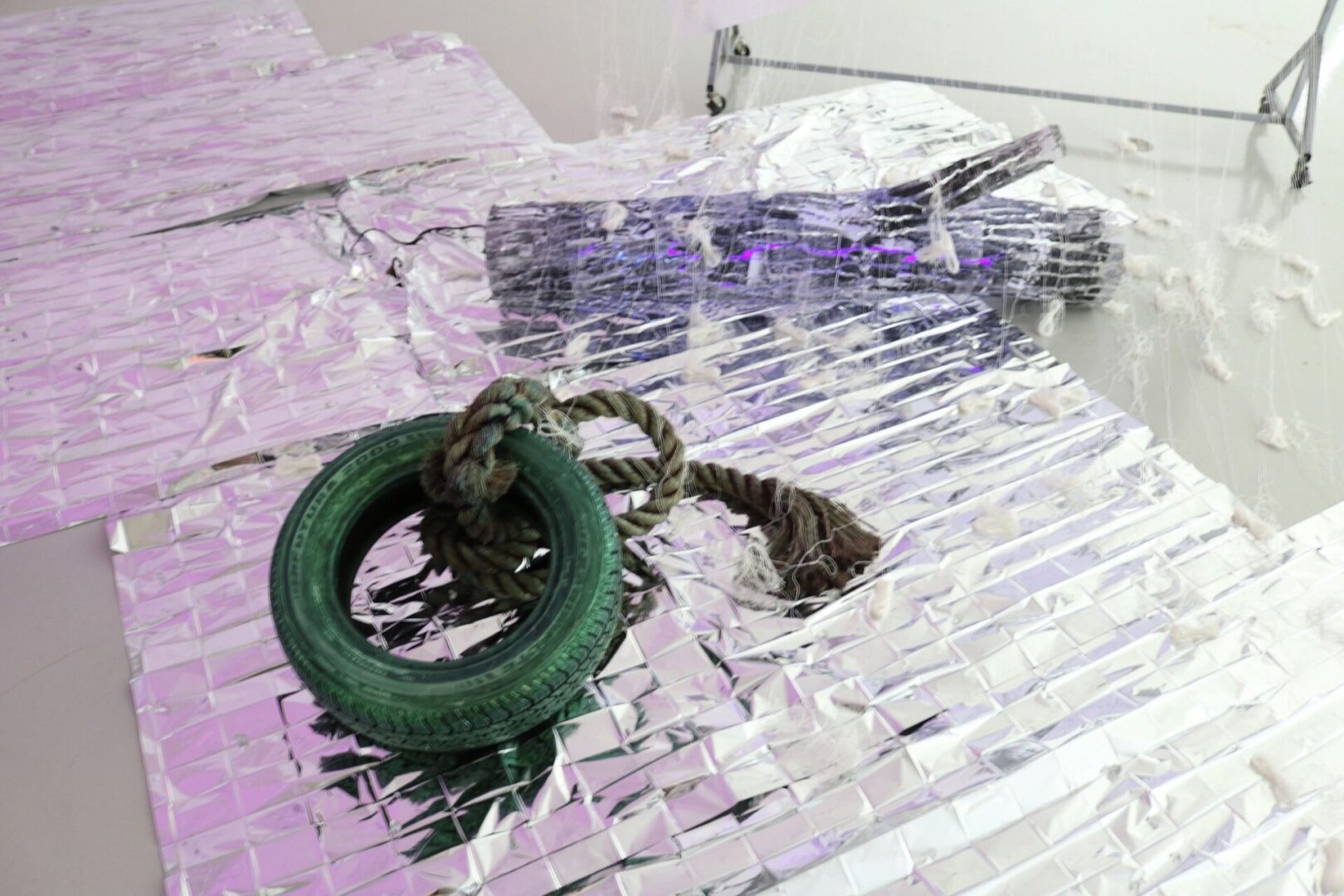Felding Innocence
Feld:
The incident of George Floyd’s abuse and killing sparked a visceral reaction for all. Being a person of color, I’ve suffered insults, isolation, and indignant acts of hostility. But I have also witnessed more outrageous acts of others with more severe consequences. The video dug deep into the emotions of experiences and social injustice.
This modern-day lunching is an echo of the past. Showing the demoralizing perception that is enculturated and accepted as permissible and, in some cases, entertaining.
In “Without Sanctuary: Lynching Photography in America,” James Allen chronicles images of lynching from the late 19th and early 20th centuries. Most disturbing are images of public executions that had been published as postcards for souvenirs.
“Felding Innocence” is a gallery installation divided into two sectors.
One sector is a field of white five-gallon buckets with lighting strips projecting and facing away from the second sector. The cords for the strips dangle to the floor and are connected to extensions that lead serpentine to floor sockets. The area is overly saturated with light.
The second sector is darkness. Only flashing red and blue lights and the purple glow from within a “log” can be seen. This log, made up of images from lynching souvenir postcards, lies on a field of silver mylar and broken glass. The surface of the mylar and glass amplifies the reflections of the flashing red and blue lights.
Near the log is a tire swing laying detached in a heap of rope. In the back, there is a whiteboard facing away from the white sector. It is covered in black marks and supports a banner that is precariously attached/detaching. The banner contains poetic phrases while sting bundles cascade over objects on the floor. These bundles of tangled narratives bring the words on the banner into the scene.
The scene of George Floyd’s killing kept me thinking of the tire on the vehicle next to his head. The tire is an object the evokes play and innocence as it is repurposed as a swing. Traditional, the swing is hung from a tree. These thoughts lead to the execution of the work and the writing of the poem.
